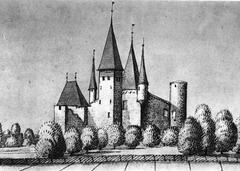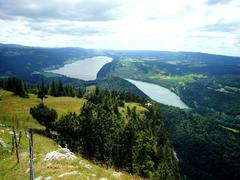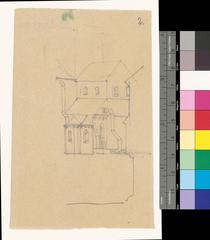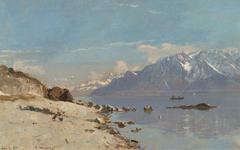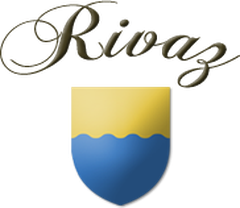
Lac Brenet Visiting Hours, Tickets, and Travel Guide in Canton Vaud, Switzerland
Date: 04/07/2025
Introduction
Lac Brenet, nestled within the enchanting Jura Mountains in the Vallée de Joux, Canton Vaud, Switzerland, offers an idyllic setting for nature lovers, families, and history enthusiasts. This comprehensive travel guide will help you discover Lac Brenet’s glacial origins, cultural significance, varied outdoor activities, and practical visitor information—including visiting hours, ticket details, transport options, and nearby attractions.
Table of Contents
- Introduction
- Exploring Lac Brenet: History, Visiting Hours, and Attractions
- Natural Environment and Ecology
- Visiting Lac Brenet: Practical Information
- Outdoor Activities
- Points of Interest and Nearby Attractions
- Vallée de Joux Historical Sites
- Nature-Based Recreation and Responsible Tourism
- Community Involvement and Stewardship
- FAQs
- Visuals and Media Suggestions
- Internal & External Links
- Conclusion and Call to Action
- References
Exploring Lac Brenet: History, Visiting Hours, and Attractions
Early Formation and Natural Setting
Lac Brenet sits at an elevation of approximately 1,002–1,006 meters, just a short distance below its larger neighbor, Lac de Joux (DBpedia; Wikipedia). The lake’s origins stem from glacial activity and natural damming, forming a unique hydrological and ecological system. The surrounding forests, protected since the 17th century, make up Switzerland’s largest contiguous woodland (Switzerland by Locals).
Hydrological and Industrial Evolution
Historically, Lac Brenet’s waters drained underground to feed the Orbe River. In the 20th century, it was adapted for hydroelectric power, with managed inflows from Lac de Joux, aligning with Switzerland’s focus on renewable energy (DBpedia).
Ice Harvesting Heritage (1879–1943)
Between 1879 and 1943, Lac Brenet became a hub for natural ice harvesting. Ice blocks were cut in winter and transported via horse-drawn carts to the Croy railway station, supplying Swiss cities and even Paris until mechanical refrigeration took over (My Vallée de Joux; Loisirs.ch).
Natural Environment and Ecology
Physical Landscape and Biodiversity
Lac Brenet’s glacially-carved basin is surrounded by meadows and dense forests dominated by spruce, fir, and beech. The lake’s cold, clear waters support a rich aquatic ecosystem, including trout and perch, while the shoreline meadows host rare wildflowers and orchids (Komoot). Local management ensures water quality remains high and preserves the lake’s oligotrophic (nutrient-poor) nature (FAO Vaud).
Wildlife
The area provides habitat for roe deer, foxes, badgers, migratory birds, and amphibians such as Alpine newts. Birdwatchers may spot Eurasian skylarks, herons, and great crested grebes.
Conservation Status
Lac Brenet is protected under cantonal and federal law, emphasizing sustainable management and conservation. Recent updates to the cantonal master plan aim to balance ecological preservation with recreational use (FAO Vaud).
Visiting Lac Brenet: Practical Information
Visiting Hours and Tickets
- Open Access: Lac Brenet is a natural site, freely accessible year-round. There are no entrance fees or tickets required.
- Hours: Accessible from dawn to dusk; daylight hours are recommended for safety.
Getting There
- By Train: Take a train to Le Pont (the nearest station) or Vallorbe, then walk or use local buses.
- By Car: Parking is available in Le Pont and near the lake (Swiss Federal Railways; sommets.ch).
- By Bus: Regional buses connect Le Pont and nearby villages.
Accessibility
- Trails: The 4–5 km loop trail is relatively flat, suitable for families and casual walkers. Some paths may be uneven; sturdy footwear is advised.
- Wheelchair Access: Limited—contact the local tourist office for up-to-date information.
Facilities
- Amenities: Basic toilets, picnic areas, benches, and waste bins at key points.
- Food & Drink: Restaurants and shops in Le Pont and Les Charbonnières supply local specialties and picnic essentials.
Best Time to Visit
- May to September: Mild weather and clear trails.
- Winter: Snow sports possible; verify ice and trail conditions.
Outdoor Activities
Hiking and Walking
The well-marked 4–5 km loop encircles the lake and features interpretive signs on glacial origins, ecology, and ice harvesting (Vaud Tourism).
Cycling
Gentle terrain makes cycling accessible for all levels, with bike rentals available in the region.
Swimming & Picnicking
Grassy banks and small coves offer informal swimming spots. Picnic tables and lakeside benches are provided.
Fishing
A local fishing permit is required; trout and perch are common (Vaud Tourism).
Winter Activities
Cross-country skiing and snowshoeing are popular nearby. The lake sometimes freezes for ice walking, but skating is not officially permitted.
Points of Interest and Nearby Attractions
Le Pont Village
A charming gateway with cafés, restaurants, and traditional architecture. The historic railway departs from here (Vaud Tourism).
Lac de Joux
The region’s largest lake, offering water sports, lively restaurants, and additional hiking (MySwitzerland).
Vallée de Joux Watchmaking Heritage
Visit the Espace Horloger museum in Le Sentier to learn about Swiss watchmaking traditions (Vaud Tourism).
Vallorbe Caves
Renowned limestone caves with guided tours and geological wonders.
Nature-Based Recreation and Responsible Tourism
- Stay on Marked Trails: Protects fragile habitats.
- Respect Wildlife: Observe birds and mammals from a distance.
- Carry Out Litter: Maintain the lake’s pristine environment.
- Sustainable Practices: Fishing, boating, and other activities are regulated (FAO Vaud).
Community Involvement and Stewardship
Local communities and visitors are actively involved in conservation efforts, with public consultations, citizen science projects, and educational panels enhancing environmental awareness (FAO Vaud).
Frequently Asked Questions (FAQ)
Q: What are Lac Brenet’s visiting hours?
A: The lake is accessible year-round, generally from dawn until dusk.
Q: Are there entrance fees?
A: No, access is free.
Q: Is Lac Brenet family-friendly?
A: Yes, with easy trails and picnic areas.
Q: Are fishing permits required?
A: Yes, permits are available locally.
Q: How do I get there by public transport?
A: Take the train to Le Pont, then walk to the lake.
Q: Are pets allowed?
A: Yes, but keep them leashed.
Q: What historical sites are nearby?
A: Watchmaking museums, Lac de Joux, and Vallorbe Caves.
Visuals and Media Suggestions
- Include panoramic images of Lac Brenet with Jura Mountains, labeled “Lac Brenet visiting hours - scenic view”
- Photos of hiking trails, wildflowers, and family activities
- Map highlighting Lac Brenet, Le Pont, and nearby attractions
- Virtual tours or drone footage for immersive experiences
Internal & External Links
Conclusion and Call to Action
Lac Brenet seamlessly blends natural serenity, ecological diversity, and a rich historical legacy. Its accessible trails, family-friendly features, and proximity to cultural and natural attractions make it a standout destination in the Vallée de Joux.
Plan your visit today:
- Check official tourism portals for updated info and event calendars
- Download the Audiala app for interactive guides and real-time updates
- Follow us on social media for travel inspiration and practical tips
Embrace the peaceful charm of Lac Brenet and experience the best of Switzerland’s Jura region.
References
- Lac Brenet, DBpedia
- Lac Brenet, Wikipedia
- Pure Relaxation at Lac Brenet, Switzerland by Locals
- The Ice Harvesting History of Lac Brenet, My Vallée de Joux
- Tour du Lac Brenet, Loisirs.ch
- Lac Brenet Adaptation of Cantonal Master Plan, FAO Vaud
- Waterfall Hikes Around Lac Brenet, Komoot
- Switzerland Tourism Official Site, MySwitzerland
- Vaud Tourism Official Site
- Vallée de Joux Tourism Official Site
- Sommets.ch Excursion Details
- Swiss Federal Railways (SBB/CFF)

